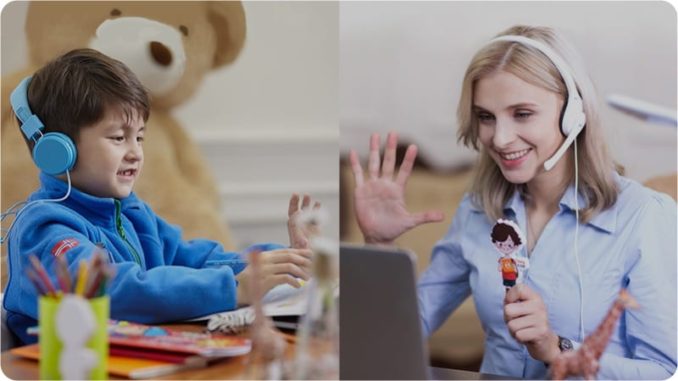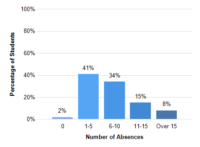
https://spark.adobe.com/page/zUJnvQtZ1mwKI/
By ALYSSA BLUNDO
Every day between 9:00 a.m. and 11:00 a.m. third grade special education teacher Christine Rogoff sits down with her students to teach reading, math, science and social studies. As she teaches her classes from home, she struggles with the emotional well- being of her students, preparing her students for their next grade level and losing social interaction.
Since March 18 when the state closed all schools due to COVD-19, Rogoff became one of thousands of teachers in New Jersey who has shifted her classroom to her living room to teach from home. Using all the available technology, Rogoff is trying to keep her students’ education on track until schools can reopen, but it is a challenge that might negatively impact her students’ ability to learn this year and their success next year and into the future.
From grade school to college, instruction for the 1.4 million students across New Jersey’s educational system has shifted to remote learning. The challenges of this new reality range from absences to access to technology for all types of families toparent anxiety about what their child is learning or missing in their education.

Lost Potential
For school districts like Rogoff’s, it has been relatively easy to make sure everyone has access to the technology needed to teach and learn from home, but for a lot of schools across the country, it has been a big problem. According to the New York Times article, “As More Schools Move Online, Many Students Stay Logged Out,” “The absence rate appears particularly high in schools with many low-income students, whose access to home computers and internet connections can be spotty. Some teachers report that fewer than half of their students are regularly participating.
Students from both large and small school districts have been struggling to connect online. The Los Angeles school district has reported that roughly a third of its high school students are not logging in for classes. In rural communities like Minford, Ohio, many students cannot join in online classes because they live in remote areas without reliable internet access. According to the Times article, teachers have also said that they have lost complete contact with some students as families “grapple with the broader economic and health effects of the coronavirus
outbreak.” The long-term effects of this lost education may be significant and could follow them into adulthood.
According to the non-profit education news service Chalk Beat, a student’s absences in one grade will affect their success in the next grade and possibly throughout their school life and beyond. In his article, “The Coronavirus Double Whammy: School Closures, Economic Downturn Could Derail Student Learning, Research Shows,” Matt Barnum writes that “missing 10 days of math class in middle or high school led to lower test scores and grades, one recent paper found, while reducing high school graduation by 6 percentage points and college enrollment by 5 points.”Barnum also reported that “as adults, those students were more likely to be unemployed, and they earned between 2 and 3 percent less. There was even evidence that the children of those who missed more school did worse in school themselves, many years later.”
Logistics of Remote Learning

Absenteeism has not been a problem for Rogoff’s students because her district has been able to provide students with the technology they need to participate. Besides her weekly student conferences, Rogoff teaches live-streamed classes three days a week using Google Suite to connect with her students from her home in Flanders, N.J. The transition to on-line learning was fast and unexpected and has been evolving since it began. “In early March, our district had an emergency professional day,” Rogoff said. “We were told we would have that day to prepare three weeks’ worth of lesson plans. Plans were created for virtual access, and hard copies were printed out for each student in the event that they did not have online access at home. After we were sent home, plans changed. The district provided Chromebooks with hot spots to all families that do not have internet access in their homes,” Rogoff continued. “After the second week, when it became clear we would not be returning to school any time soon, all work started being assigned on Google Classroom. I was lucky because I had been using Google Classroom with students since September, so they were used to it. That definitely helped with the transition.”
Rogoff’s students are familiar with the technology but their parents may not be. That creates other problems. “Students and parents seem to be experiencing high levels of anxiety,” Rogoff said. “I receive a lot of questions from parents because they say that they don’t know how to use Google Classroom. Some students are not taking the lead on their own work and are waiting for their parents to do things with them that they used to be able to do on their own. I have students who do not have the level of support at home that they need and are having trouble figuring things out.”
Emotional Well-Being

Middle school teacher Christina Blundo sees similar issues with her students. An eighth-grade math and science teacher in Maywood, N.J., Blundo worries most about the kids who typically need extra help in the classroom. “One-on-one instruction is lost. When a student needs me to sit with them and explain a problem over and over until they understand it. I don’t have that opportunity, and many of my students need that.”
Blundo has tried to adapt using the available technology but it has not been easy. “I have had to meet separately with students that are struggling,” she said. “We talk about work load and setting up a schedule together. I have worked closely with their case managers and have had numerous Google meets with the case manager, myself and the student. I have also modified assignments and cut down the amount of work if the student is struggling. Students have stated they feel overwhelmed because it seems like they are receiving more work in the virtual classroom than when we were in school, but that may be because the support they usually receive isn’t there,” Blundo continued. “One student told me her home life is very stressful and coming to school each day was a way for her to separate school and home. Now she doesn’t have that. For me that student’s wellness needs to come first in order for her to learn.”
Middle school teacher Christina Blundo sees similar issues with her students. An eighth-grade math and science teacher in Maywood, N.J., Blundo worries most about the kids who typically need extra help in the classroom. “One-on-one instruction is lost. When a student needs me to sit with them and explain a problem over and over until they understand it. I don’t have that opportunity, and many of my students need that.”
Blundo has tried to adapt using the available technology but it has not been easy. “I have had to meet separately with students that are struggling,” she said. “We talk about work load and setting up a schedule together. I have worked closely with their case managers and have had numerous Google meets with the case manager, myself and the student. I have also modified assignments and cut down the amount of work if the student is struggling. Students have stated they feel overwhelmed because it seems like they are receiving more work in the virtual classroom than when we were in school, but that may be because the support they usually receive isn’t there,” Blundo continued. “One student told me her home life is very stressful and coming to school each day was a way for her to separate school and home. Now she doesn’t have that. For me that student’s wellness needs to come first in order for her to learn.”
Preparation for the Upcoming Year

Blundo worries that some of her students will not be fully prepared for the next school year. “It is definitely harder to assess how much students are actually learning in the on-line classroom and how prepared they will be for next year,” she says.
Rogoff agrees. She says that with the lack of personal interaction that exists between a student and teacher in the classroom, it can be difficult to engage students and to help them individually. “We miss seeing each other,” she says. “It’s difficult to assess student performance and the degree of difficulty that they may have experienced on an assignment or how much a parent may have contributed when it all comes back correct. It’s hard to know who needs more help when I’m not there to see them do their work, which makes it harder to know if they’ve learned everything they need to be successful in the next grade.”
Lynda Essman, a third-grade teacher in New Milford, N.J., thinks her students are learning what they need to know this year and will be ready to go on to fourth grade. “I think for the most part, students will be ready for their next grade,” she said. “I do think it will be an adjustment for both them and their teachers next year, especially if we don’t go back at all until September. But I also think that learning to be flexible and having to adapt to a completely unexpected situation are great lessons that will help students in the long run. The biggest adjustment for my students is that they will not be taking the NJSLA standardized test this year, so their first experience with state testing will be in fourth grade. Fourth grade teachers are used to students coming in and being familiar with how testing works. That will be another new challenge next year.”
Losing Social Interaction and Student Performance

Another thing that students are losing out on in the online classroom is social interaction and development. According to Blundo, “The social aspect of school is being lost and that is extremely important.”
The same is true for Rogoff’s class. “My students seem to miss being together in school,” she says, “so maybe this will help them to appreciate the little things about school when we finally go back. Parents have been very appreciative of the work teachers put in, and that’s always nice to hear.”
Besides being a teacher, Rogoff is also a parent of two children who are schooling from home. Maintaining the education of her fourth-grade daughter and second-grade son is also crucial. Rogoff says they have a created a new daily routine. “In the beginning of each day, we write their class assignments for the day, as well as their Hangout [a group communication app] times, on a large white board in our living room,” she says. “As they finish their work, they check it off. We have two laptops with cameras in our house, as well as a desktop without a camera.When the three of us have Hangouts at the same time, we are lucky enough to have an iPad with the Google Hangouts app on it so that no one needs to miss a meeting.”
When a teacher also has kids who are learning from home, the ability to juggle their own classrooms and their children’s’ educational needs can be stressful. According to Joseph Blundo, a middle school physical education teacher and Christina Blundo’s husband, “We are adapting and making the best of a very challenging situation,” he says. “We are grateful to be healthy and that helps keep everything in perspective.”
Keeping things in perspective is the best approach to facing the challenges that shifting to online education has created. Teachers and students are doing the best they can, but only time will tell how successful this unprecedented experience will turn out to be.
Another great PD opportunity – this one about the teaching parent. Register to learn with @shareski and @courosa https://t.co/2XcIV6h2Fg
— Julie Parisloff (@MrsParisloff) April 28, 2020
I thought this article gave readers a really insightful view into the concerns of teachers now that schools have transitioned to online education for the rest of the 2019-2020 school year. I liked how you balanced professional concerns with information about their personal lives, showing the larger concerns that teachers have outside of their profession. I would’ve loved to know if any of the teachers you interviewed had any thoughts about being online for the 2020-2021 school year, whether it’s partially or wholly online. I would also like to know how teachers will help students and parents better adapt to online education tools, if there’s any guidance that they will receive to help parents in the future. This was a really great article and I enjoyed all the information you included.